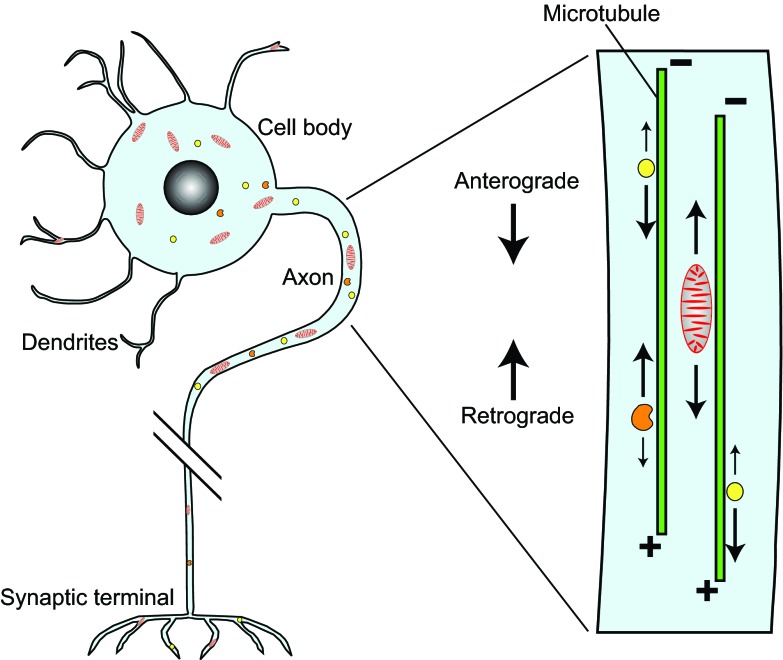Fig. 1.
Neuron structure and axonal transport. This simplified representation of a peripheral neuron shows a somato-dendritic region (cell body) that gathers signals from presynaptic neurons, and an axon that carries waves of self-propagating membrane potential changes (action potentials) from the cell body to the synaptic terminal, which responds by releasing chemical signals to a postsynaptic neuron or muscle cell. Proper neuron development and function relies on vigorous long-distance transport of cytoplasmic components including vesicles (yellow), mitochondria (red) and endocytic organelles (orange) along the axon. It is thought that a major purpose of such transport is to deliver organelles and other materials newly synthesized in the cell body into the axon and toward the terminal (anterograde) for carrying out their various functions, and to return aged materials back to the cell body (retrograde) for degradation and recycling. Both forms of long-distance transport use motor proteins that attach to a ‘cargo’ and pull it along microtubules (green) toward either their plus ends (oriented away from the cell body) or their minus ends (oriented toward the cell body). To help grasp the scale of the transport logistics faced by a long neuron (e.g. a human upper or lower motor neuron) with a 30 μm diameter cell body and a 1 meter long by 1 μm wide axon, imagine standing in a lecture hall that is 30 meters in diameter with a 1 meter wide pipeline starting from one wall and extending off across the landscape. The pipeline terminal would be 1000 km distant. Finally, consider that the pipe, with a volume 120-fold greater than that of the lecture hall, is filled with complex machinery. Much of that machinery is fabricated in the hall, so it must be delivered to destinations that need it, then after obsolescence, much of it must be returned for recycling.

